Psoriasis (Greek "psora" - translated from "skin disease, scab") is a non-infectious chronic pathology, mainly affecting the skin of the knee and elbow joints, back and body, also called scaly lichen. headThere is also psoriasis of the joints, bones, nails, external genitalia and internal organs, but these forms are rarely diagnosed. The pathology is difficult to treat, so when the first symptoms appear, red rashes appear, it is necessary to consult a doctor immediately.
Symptoms
Stearin stain
The first sign of psoriasis, which is part of the triad of pathological symptoms. The affected surface is characterized by increased peeling after breaking with a spatula. Over time, there is a separation from the silvery-white scales papules. They are not difficult to remove because they are loose and adhere poorly to the psoriatic papule. The surface of the neoplasms (spills) turns white and the particles disintegrate into chips.

The first phenomenon of the triad is explained by the development of parakeratosis (dysfunction of the epithelium, leading to disruption of the formation of the stratum corneum). At the initial stage, local non-hormonal substances (creams, ointments) are used to combat the deviations.
Terminal Film
It is characterized by the removal of a thin layer of tissue from papules that have a shiny structure and resemble polyethylene. Once the dried flakes are removed, they are easily separated by any impact (pressure, friction, etc. ).
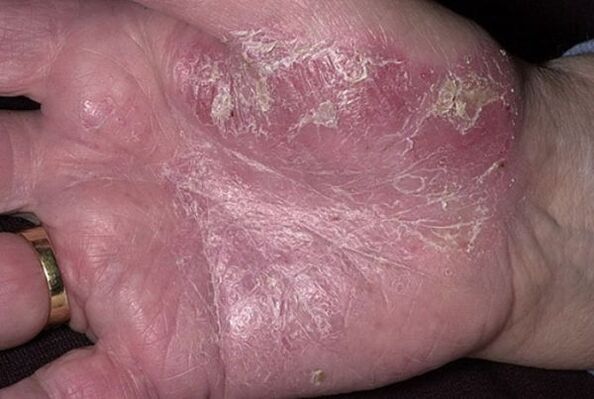
The terminal film is the last layer removed from the skin. Additional crumbs lead to the final stage of the triad - drip bleeding.
At this stage, herbal baths, antiallergic drugs, natural ointments (without corticosteroids and hormones) are used.
Bloody bleeding
After removal of the terminal film, there is a drop of bleeding in the affected area of the skin (symptom or "bloody raw"), and a rapid growth of neoplasms, sometimes reaching the size of a pea and called lenticular, is noted. In some cases, the papules grow to the diameter of a small coin and vary in number. As the disease progresses, growths increase and psoriatic plaques form when combined.
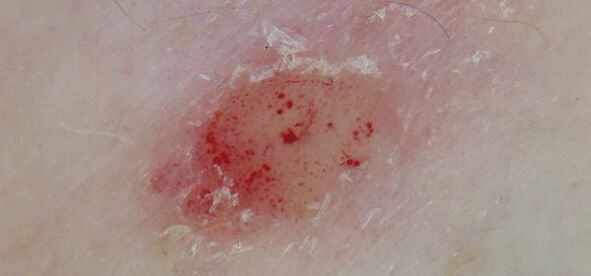
Retinoids, immunomodulators, anti-inflammatory drugs, physiotherapy are used for treatment.
Others
The disease is characterized by 4 other characteristic symptoms:
- The rim is red, not covered with scales that form around the papules.
- Small rashes appear on a clean area of the skin (usually before the advanced stage of psoriasis).
- A symptom that helps to distinguish psoriasis from seborrheic dermatitis is characteristic of the active phase of the pathology. Accompanied by the appearance of papules with clear borders on the scalp; it does not occur with seborrheic dermatitis.
- A light, shiny leather edge appears around the form. The symptom is typical for the regression phase of the disease and appears when the papules disappear.

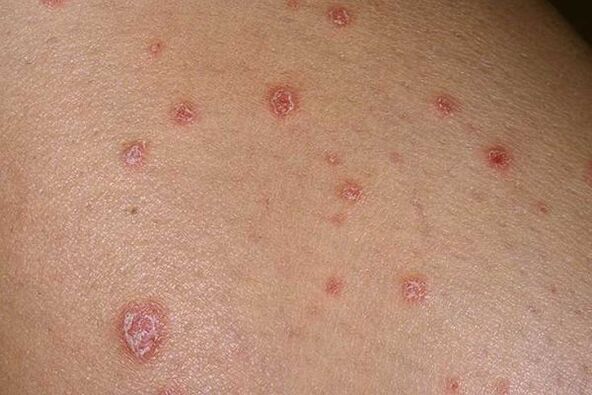
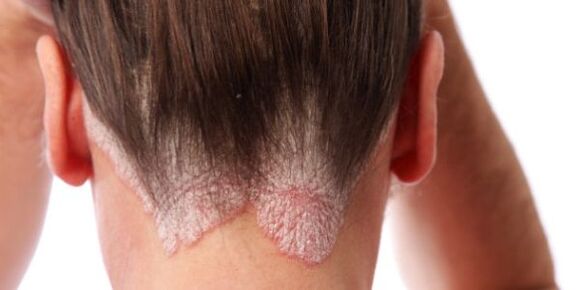
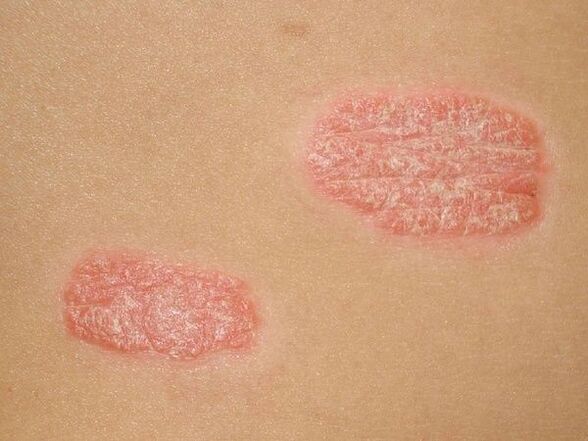
What it looks like
In most cases, the onset of pathology is not felt: in the early stages, psoriasis bends small parts of the skin, mainly the limbs, head and along the hairline.
Attention!Initial manifestations occur at the site of constant mechanical irritation of the skin, for example, at the site of rubbing and pressing clothes.
Common symptoms:
- itching;
- excessive dryness of the skin;
- peeling of pathological elements;
- general health disorders (weakness, lethargy, fever).
There are 3 stages in the development of pathological papules:
- Progressive.Appearance of a bright pink evidence surrounded by a rich, slightly indistinct edge. In the center of the papules, the skin peels off and gives the formations a white color. At this stage, the rash may appear at the site of scratches, skin damage, bites, cuts, punctures or burns.
- Stationary. It begins 1-4 weeks after the onset of the disease. New boards are not visible, old ones take on a lighter color, the intensity of peeling is reduced.
- Regressive.The color of plaques and papules decreases, infiltration decreases, and formations dissolve. The average duration of the decay period is between 2 and 6-8 months.

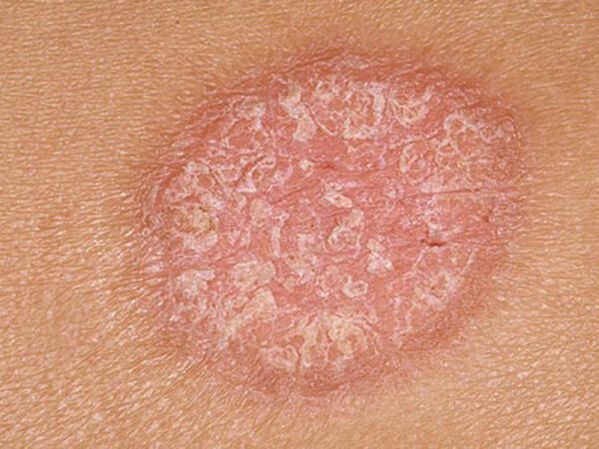
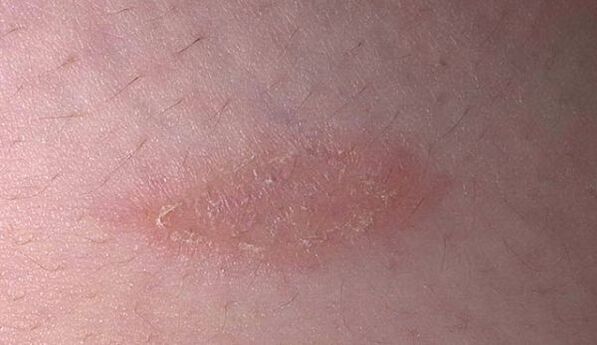
Symptoms of the disease depending on the type:
- Plaque(general or vulgar). The most common pathological type. Red oval or round plates covered with silver-white scales appear on different parts of the body (mostly on the elbows, knees, head).
- Seborrheic.It occurs mainly on the scalp. It manifests itself as peeling and itching, spreading to the area behind the ears and along the hairline.
- PustularThe type is the most severe form, develops rapidly and affects large areas of skin. Painful rashes appear in the body, accompanied by a local increase in temperature, weakness, headache, diarrhea. Exudate-filled vesicles soon form in the lesions. In the future, the spots progress, merge with each other and form large lesions on the body.
- Intertriginous.It is typical for children with the appearance of bright red papules, with a slight peeling (may not be there).
- Exudative.Affected areas of the skin are not only peeled, but also form wet, yellowish crusts on the surface of the boards.
- Psoriatic erythroderma.There are silver, yellow or white red plaques on the body. An increase in lymph nodes is accompanied by an increase in body temperature. In the future, the formations will merge into large spots that cause irritation and itching.
- Psoriatic arthritis."Articular syndrome" is accompanied when the skin in the joint area (wrists, phalanges of the fingers, spine, etc. ) is affected and untimely action is taken. As a rule, the disease affects the joints.
- Tearsaccompanied by abundant rashes consisting of many small plaques. In this case, the papules are in the form of drops, ranging in color from bright red to purple.
- The point.It is characterized by the formation of small spots resembling spots in different parts of the body, and there may be no peeling of the dermis.
- Rupioid.One of the types of chronic psoriasis. The shells appear in formations, are higher, and are conical in shape.
- Oldmanifests itself in large papules that do not last long, sometimes papillomas and warts appear on it.
- Psoriatic onychiacauses deformation of the nails, the formation of yellow-brown spots underneath.
- Palmar-plantar.Appears on palms and feet. The main symptoms are thickening of the skin, dryness, cracks.
- Psoriasis of the mucous membranesaffects the oral cavity and causes the appearance of plaques on the mucous membrane.
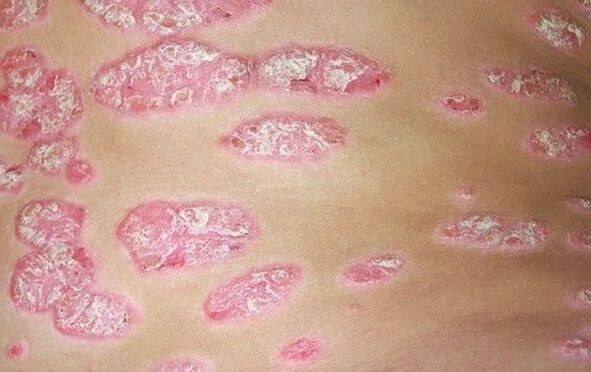
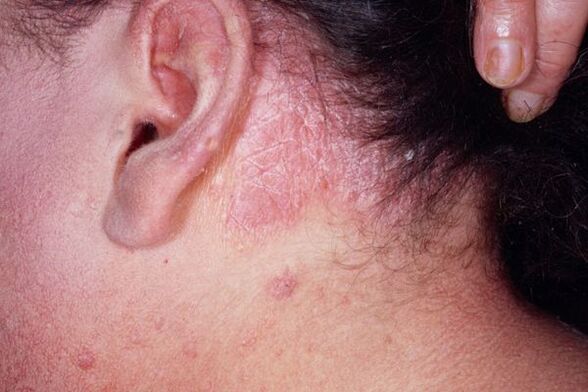
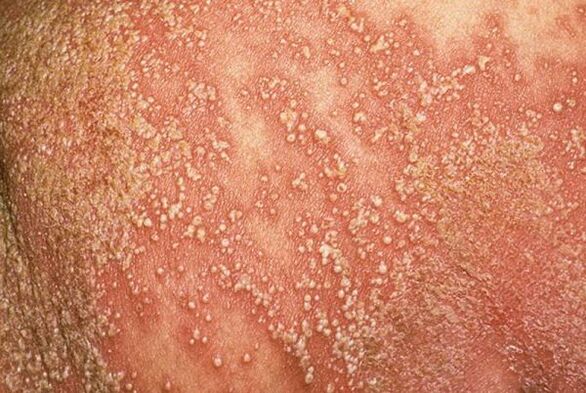
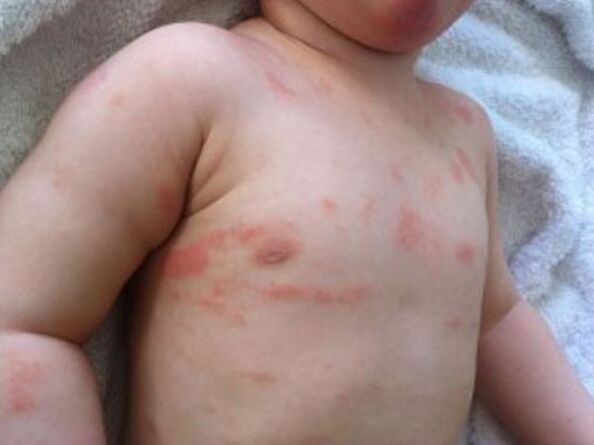
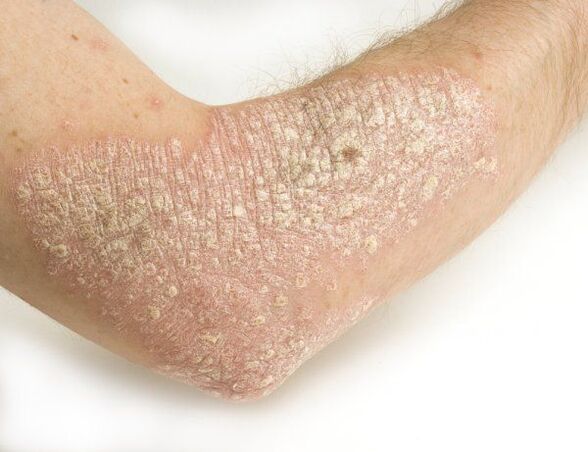
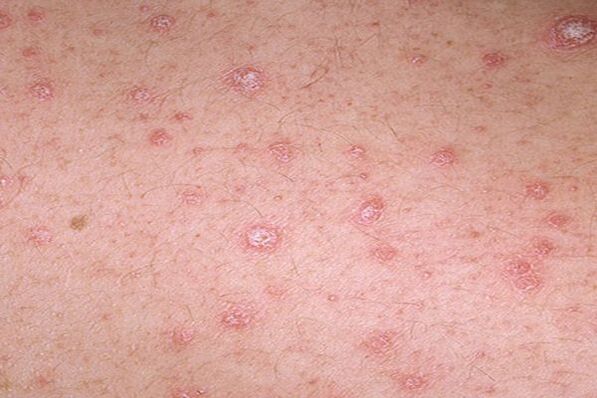
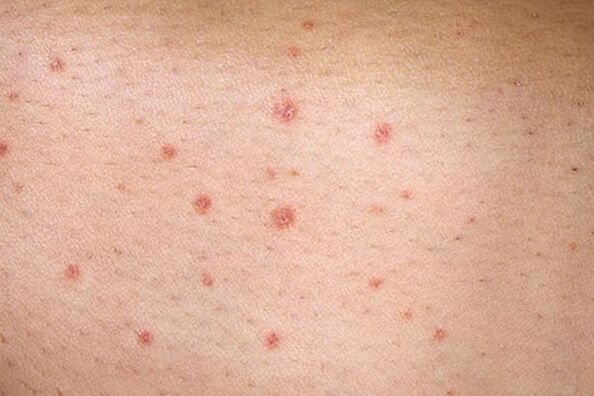
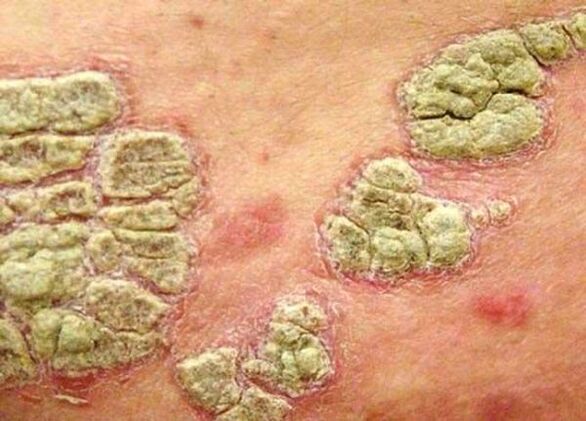
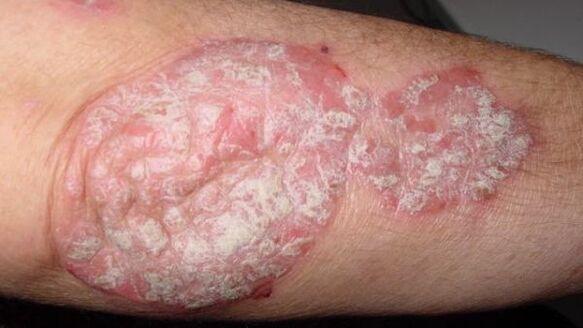
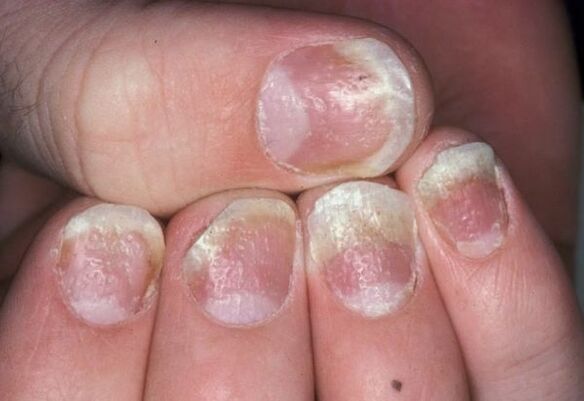

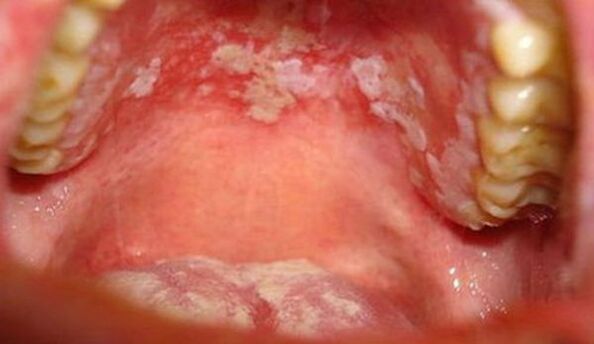
Localization of psoriasis
Hands
In most cases, rashes appear on the surface of the elbows or between the fingers. Less commonly, papules are noted on the wrist.
Attention!Hands are characterized by a pathological form, but others are also found. The sign is small red spots, quickly covered with white scales, the affected skin becomes rough.
Feet
Psoriatic formations occur mainly in the legs in the knee area, but can occur in other parts of the legs.
The first rash is single and small, with an open outline, but loose, inflamed and very scaly. These clear papules spread rapidly to form conglomerates.
Head
Often develops on the background of seborrhea, affecting the hair line, forming a so-called psoriasis crown. Skin formations gradually grow and become dandruff-like, spreading over the entire surface. This localization occurs quite often, less often a rash appears on the ears or behind them.
Nails
Nail plate can be affected by the type:
- High- point form of psoriasis. Small holes appear in the nails that look like needles.
- Onychomycosis- The nail changes color, becomes dull, significantly thickens and begins to peel. Inside the plaque, a psoriatic papule appears, surrounded by a red border, resembling an oil stain.
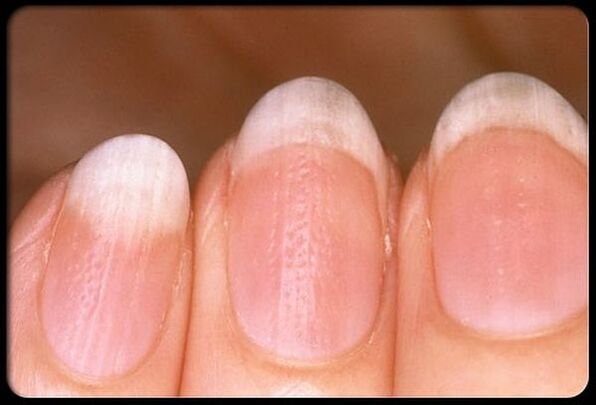
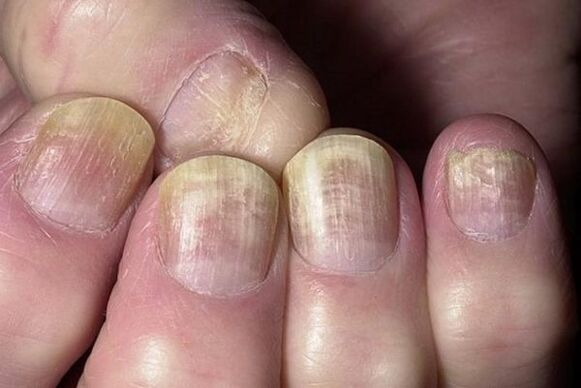
The body
It usually manifests itself as characteristic papules that stick together. Psoriasis occurs more on the back, less on the neck, abdomen, hips, the formations can be in the form of drops, dots and plaques.
Face
Rarely affected, the rash is located in the nasolabial folds, temples and eyebrows, around the eyes. Rarely, the pathology affects the border of the lips, the rash resembles herpes.
Palms and feet
Both zones are affected at the same time, but there have been cases where the pathology has developed only in the legs or palms. Heel disease is often associated with fungal pathology, which makes diagnosis and therapy very difficult.
This type of psoriasis is divided into 3 types:
- Papular plaques- formations are dense, do not protrude above the skin, the scales are difficult to separate from the plate. Occurs in peripheral areas accompanied by rash, edema and keratosis.
- Psoriatic callus- round dense papules consisting of keratinized epidermis. The skin layer gradually thickens and becomes rougher. As a result, it is easily injured and cracks appear. There is practically no redness, the size of the growth is from 2-3 millimeters to 2-3 centimeters.
- Vesicular-pustular- manifests itself in the form of serous-purulent papules. The bubbles reach a diameter of 2 millimeters and tend to coalesce.
Joints
The pathology can affect a person's joints, causing a change in the structure of their tissues, which in turn causes pain and deformity. External symptoms: There is evidence of redness on the skin. Internal symptoms - joint pain, stiffness, swelling, especially during sleep.
It is important!Initially, psoriasis affects the small joints of the feet and hands, then spreads to the knees and elbows, and at an advanced stage, the intervertebral joints already suffer.
Itching or not
In most cases, psoriatic disease is accompanied by itching of varying intensity, sometimes itching not only spots, but the whole body. In the initial stage, the itching is mild and gradually increases.
The severity also depends on the location of the pathology. For example, psoriasis on the head is very itchy, the skin peels off and falls into large flakes that are larger than normal dandruff. In the stationary stage, itching is reduced and often leads to a burning sensation. During remission, all major symptoms are mild.
Itching:
- relapse;
- climate change;
- general intoxication;
- diseases of the digestive system;
- itching, allergies;
- HIV infections.
After drinking coffee, alcohol, spicy and spicy foods, chocolate and other allergens, the skin itches badly.
How to distinguish
For eczema
- The nature of the spill.With eczema, blisters or blisters are periodically filled with leaking fluid. Psoriasis is characterized by the appearance of dry scaly papules, blood is visible when removed.
- Itchy skin.Eczema is more itchy than psoriatic pathology.
- Color.In psoriasis, the scales are silvery in color and the areas affected by eczema are bright red or red.
- Painful areas.Eczema affects the soft, sensitive areas of the skin, armpits and groin. Psoriasis is characterized by rash on the rough, hard and thick layers of skin (knees, elbows, head, etc. ).
- Causes of the disease.Psoriasis is often caused by neurogenic factors, while eczema is caused by allergies and malfunctions.
- Features for rashes on hands.With psoriasis, holes form in the nail plate, and eczema resembles a fungal infection.
For seborrheic dermatitis
The clinical manifestations of the diseases are similar, but there are several features that can distinguish them:
- psoriasis is characterized by an unhealthy glow of the skin and bloody cracks, and this is not observed with seborrheic dermatitis;
- dermatitis, unlike psoriasis, is not accompanied by roughness and severe dryness of the skin;
- scales silver and seborrhea yellow or white with psoriasis;
- seborrheic scales are easily removed, but those with psoriasis are not cleared;
- dermatitis is more common in the areas of accumulation of sebaceous glands and in scaly diseases - all over the body;
- psoriasis of the scalp extends significantly beyond the area of hair growth, and seborrheic pathology does not cross this line;
- The area of lesion with squamous lichen is larger than that of dermatitis.
From mushrooms
- Psoriasis occurs in the presence of a number of triggers, such as heredity, mechanical damage to the skin, dysfunction of the immune system, etc. The causative agent of the second disease is only the spores of parasitic fungi.
- Psoriatic pathology is not contagious and is not transmitted by air or sexual contact or touch.
Attention!Fungus (onychomycosis) in public places - saunas, swimming pools, gyms, etc. Affects any contact, including. Infected by animals and humans.
- With psoriasis, the structure of the hair does not change, and fungal disease causes brittleness, dryness and hair loss.
- Unlike paid lichen, onychomycosis of the legs and feet is accompanied by an unpleasant odor.
- With the defeat of paid nails, the structure already changes in the first stage, and for a long time the structure and color of nail plates with a fungus does not change.
Pink lichen
A distinctive feature of psoriasis is the "psoriasis trio". The disease progresses gradually and goes through 3 stages. Pityriasis rosea (pityriasis) grows rapidly and is constantly advancing. In addition, pityriasis is a contagious disease, but not a paid lichen.
From neurodermatitis
- Atopic dermatitis (neurodermatitis) is of allergic origin and is triggered by a specific substance, such as plant pollen, food, animal hair, etc. The causes of psoriasis are different (heredity, reduced immunity, psychosomatics, mechanical damage to the skin, etc. ).
- With neurodermatitis, the skin becomes dry and rough, and with psoriasis it becomes scaly and bleeds.
- Dermatitis plaques consist of separate small elements, in the case of a zone, the papules are equal and covered with silver scales.
- The color of psoriatic rashes is brighter than that of neurodermatitis.
For gout
The difference between gout and psoriatic arthritis is the cause of the development. Gout is caused by the accumulation of uric acid crystals in the cartilage of the joints. Abnormalities can be caused by: high blood pressure, obesity, taking diuretics, drinking alcohol, etc.
The symptoms of psoriasis and gout are similar - severe pain at night, stiffness in movement, redness and swelling in the affected area. However, in most cases with psoriasis, first characteristic red rashes appear, followed by pain.
Other different symptoms of gouty arthritis include:
- presence of white nodules in the affected joint area;
- Symptoms of kidney stones (back pain, blood in the urine, etc. ).























